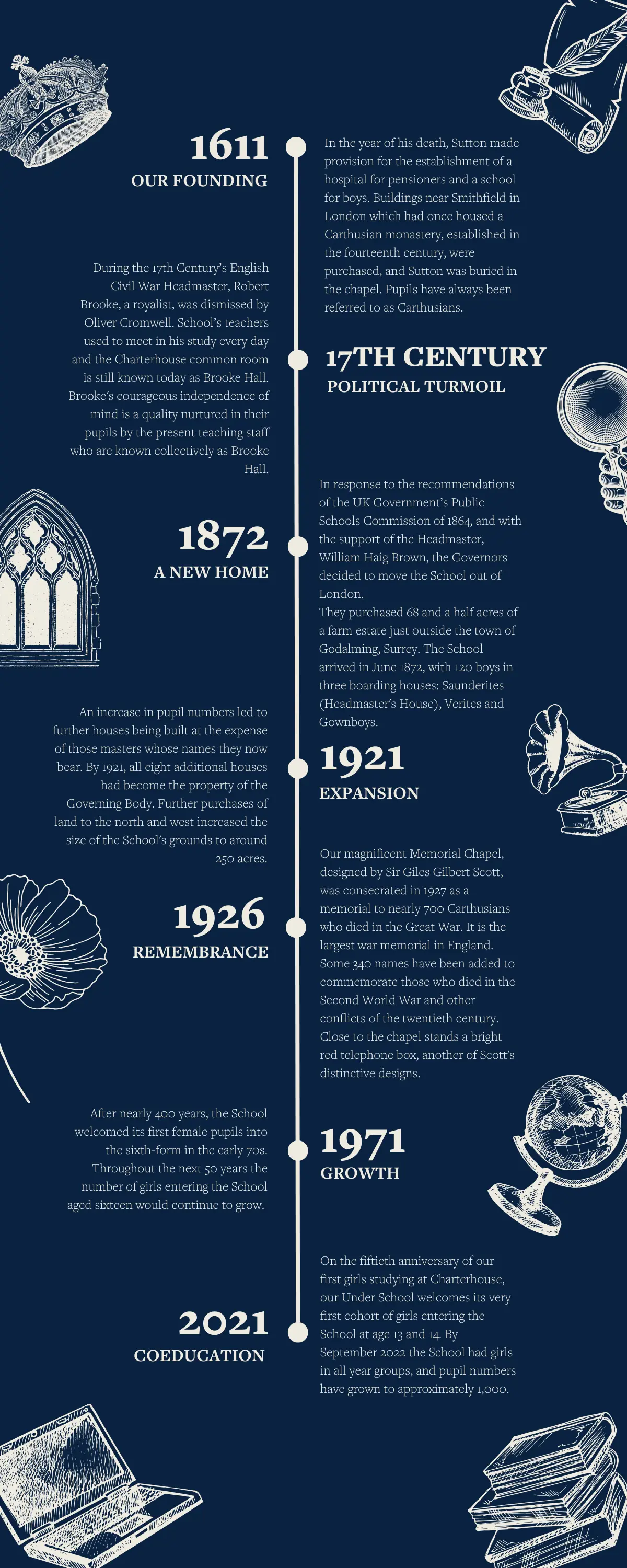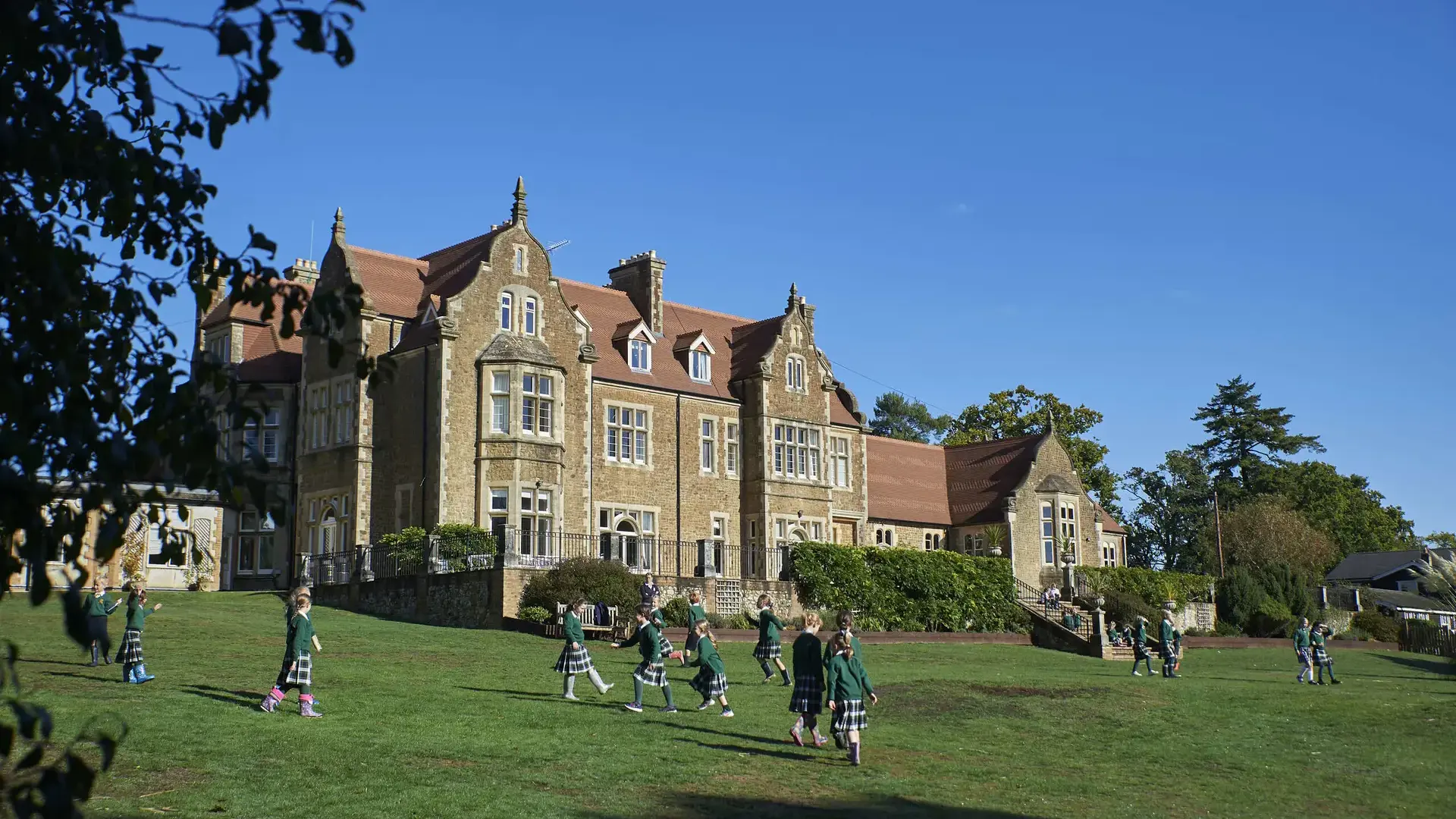Our History & Heritage
Charterhouse is one of the great historic schools of England and among the most beautiful. Our founder, Thomas Sutton, held high public office and through shrewd investment became one of the wealthiest men in 16th Century England.

The School Archive
The Charterhouse School Archive (in Godalming) contains the records of the School's activities and administration since 1872.
Some registers and printed annual form lists for earlier years in the nineteenth century were transferred when the School moved from London, and a few papers, letters and albums relating to the period before the move have been given by former masters and pupils.
Otherwise all earlier records of Thomas Sutton's 1611 foundation, including scholars, are held in the London Metropolitan Archive.
The Charterhouse Archive contains the official records of the School, but also a wide range of information and photographs covering every aspect of Carthusian life, and collections relating to the lives of Old Carthusians as diverse as Thackeray, Baden Powell, Beerbohm, Vaughan Williams and Ronald Millar.
The archive is available to the School community as an educational and administrative resource, and we also welcome research enquiries from the general public.
Visit the Charterhouse Digital Archive
For further information or to arrange a visit, please contact our Archivist, Catherine Smith:
|
 |







